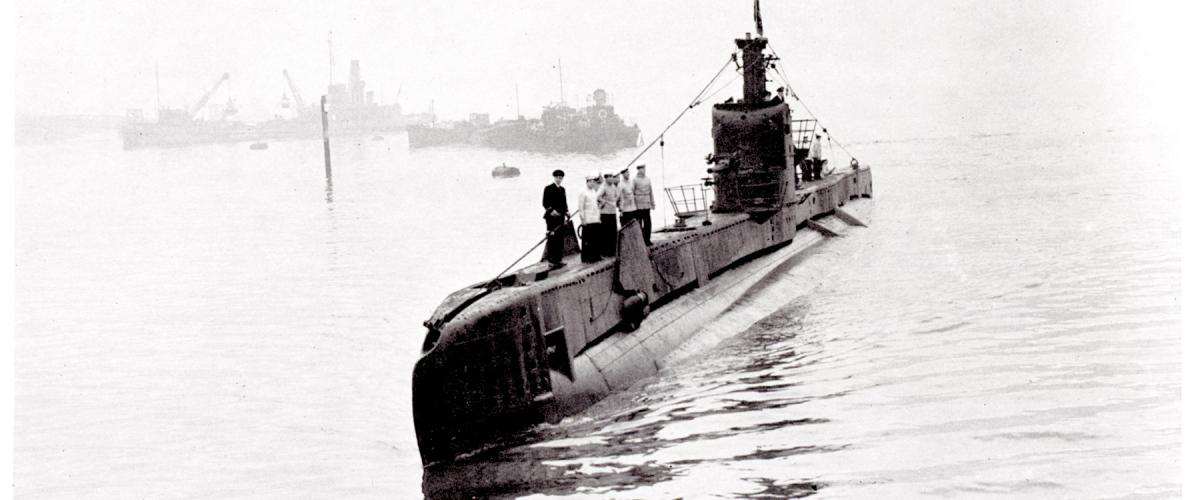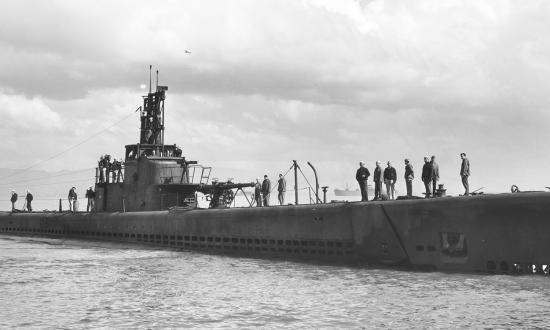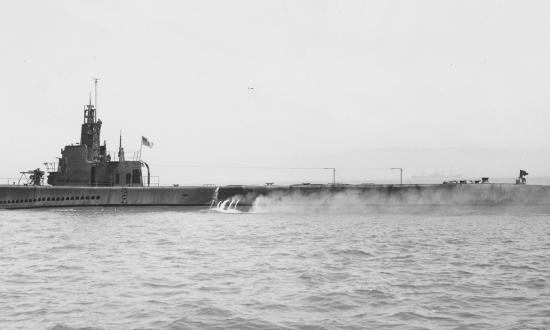Russian Rifle Riddle Resolved
Marc S. Russo
I really enjoyed Todd A. Woofenden’s article “Taking Aim at North Sea Mines.” A largely forgotten chapter of what was still effectively World War I, it is a story of some true heroes whose feats are little known.
The first page of the article shows a sailor with a rifle taking aim at a mine. The photo isn’t very clear, and the caption identifies the rifle as possibly being a Russian Mosin-Nagant, based on the ship’s service off of Archangel. A reasonable deduction. However, the rifle is a Steyr-Mannlicher M95, which the Mosin outwardly resembles in some respects.
The Russians captured many of these rifles and large quantities of their ammunition from Austro-Hungarian forces, and due to chronic shortages of rifles, they issued them to a significant number of units. After the war, they would have been a lot more likely to part with (or sell) these non-standard weapons, rather than the Mosins, which served through World War II.
‘The Tactical and Strategic Key’
Lane Napoli
I look forward to reading Trent Hone’s new book Mastering the Art of Command: Admiral Chester W. Nimitz and Victory in the Pacific after reading his recent Naval History article (“The Nimitz Way”).
Having just reread Rear Admiral Edwin T. Layton’s 1985 book And I Was There: Pearl Harbor and Midway—Breaking the Secrets, I wonder how Layton’s insights/observations as Nimitz’s intelligence officer during the entire war compare with Mr. Hone’s book.
Two points that stuck with me from Layton: First, enemy radio traffic provided Nimitz intelligence “with the tactical and strategic key to his Pacific campaign.” (And I Was There, p. 471). Second, it was Nimitz, not General Douglas MacArthur, who originated the idea of bypassing Japanese strongholds, letting them wither on the vine. (And I Was There, p. 499). Layton saw and lived it all.
The Submarine(s) of Torch
Norman Polmar
Vincent O’Hara’s two articles on the Allied invasion of North Africa (“Destination: North Africa" and “Tough Race to Tunisia”) are excellent. One thing the articles don’t touch on are the submarines that took part in the invasion. One British and one temporary U.S. submarine did participate.
The British submarine Seraph was commissioned in June 1942, under the command of Lieutenant N. L. A. (Bill) Jewell. Her first mission was a periscope reconnaissance of the Algerian coast. Upon returning to Gibraltar, instead of being given orders to operate against the German and Italian forces in the Mediterranean, the submarine was assigned to Operation Flagpole: carrying General Dwight D. Eisenhower’s deputy, Lieutenant General (soon to be Major General) Mark Clark, to North Africa for secret negotiations with Vichy French officers.
Loaded with folding canoes, submachine guns, walkie-talkie radios, and other equipment, the submarine embarked Clark, two other Army generals, U.S. Navy Captain Jerauld Wright, a couple of colonels, and three British commandos.
The Seraph then sailed to the Algerian coast. There the collapsible canoes were launched to carry Clark and his party ashore on the night of 20 October. His subsequent meeting helped reduce French opposition to the landings (although the French were not told that the U.S. and British troop ships were already at sea and that the landings would commence in a few days).
The Seraph came within 300 yards of the beach on the morning of 23 October to reembark her passengers. Because of the importance of returning them to Eisenhower’s headquarters at Gilbraltar as soon as possible, the Americans were transferred at sea to a PBY Catalina flying boat.
A few days later, Lieutenant Jewell re-ceived orders to sail to the coast of southern France to secretly take aboard French General Henri Honoré Giraud. He had been asked to follow the Anglo-American troops into North Africa to gain support for the Allies from the French colonies in North Africa. But Giraud would not travel in a British submarine because of the strong anti-British feelings among Frenchmen at the time. (See “Force H to Mers-el-Kébir”).
Captain Wright embarked in the Seraph as nominal commanding officer of the submarine, which was temporarily transferred to the U.S. Navy. Lieutenant Jewell remained on board to actually direct operations (Wright not being a submariner). The Giraud party was picked up from the town of Le Lavendou by the Seraph on the night of 5–6 November and then transferred at sea to a PBY for a flight to Gibraltar.
Subsequently, the Seraph operated in the Mediterranean, both as an attack submarine and for carrying U.S. and British commandos in subsequent operations. She remained in active British service until 1962.
When the Seraph was scrapped in 1965, her periscopes and other parts were incorporated in a memorial to the submarine at the Citadel in Charleston, South Carolina. The Royal Navy’s white ensign and the U.S. flag both fly over the memorial.
Correction: In the caption on p. 12 of the February issue, “(VMF) 21” should read “(VMF) 121.”






